Melbourne's Sporting Wonders Unveiled
Join us for a captivating free walking tour that immerses you in Melbourne's vibrant sports culture and iconic landmarks, showcasing the city's athletic spirit.
Time
3 Hours
Stops
9 Places
Distance
3.4 km
Melbourne Cricket Ground (MCG)
Begin your tour at the iconic Melbourne Cricket Ground, a pivotal sports venue that has hosted countless cricket matches and AFL games, representing Melbourne's rich sporting culture.
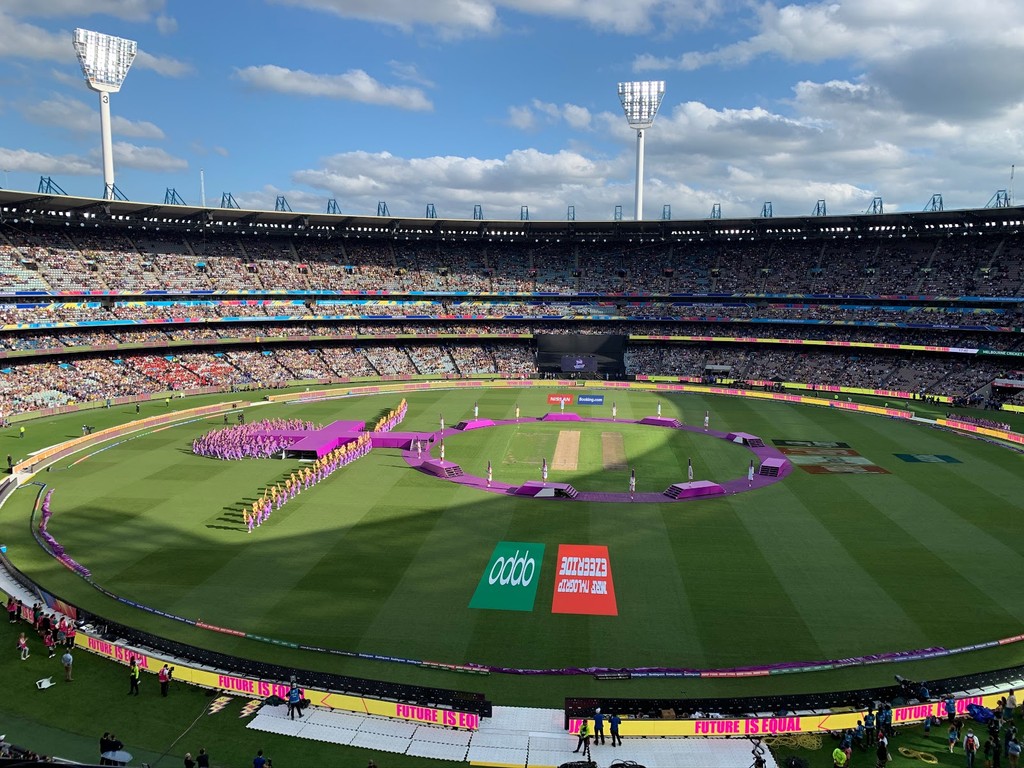
Melbourne Cricket Ground (MCG) (Source: Google Maps)
The Melbourne Cricket Ground (MCG) is one of the world's most famous sports venues, often referred to as the 'G.' Established in 1853, it is the birthplace of Test cricket and has a rich history of hosting significant sporting events, including the AFL Grand Final and the 1956 Olympic Games. With a seating capacity of over 100,000, it is the largest stadium in Australia and a central hub for cricket and Australian Rules Football. The MCG is not just a sports ground; it also houses the National Sports Museum, which celebrates Australia's sporting achievements and heritage. The architecture of the MCG is a blend of historic and modern elements, showcasing its evolution over time. The iconic light towers and the beautifully maintained grounds are a testament to Melbourne's passion for sports, making it a must-visit landmark for sports enthusiasts and tourists alike.
Yarra Park
Adjacent to the MCG, Yarra Park is a beautiful green space perfect for a leisurely walk, providing a serene escape and a chance to enjoy the local flora.
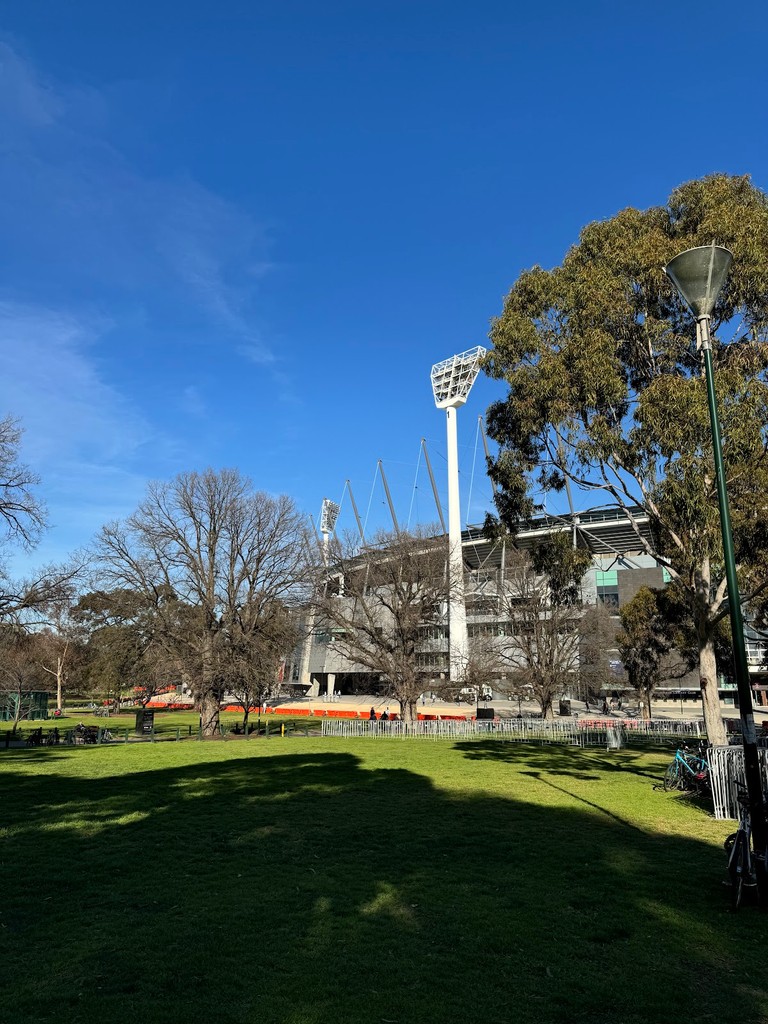
Yarra Park (Source: Google Maps)
Yarra Park is a lush green space that complements the Melbourne Cricket Ground, offering a tranquil setting for relaxation and recreation. This park is home to a variety of native flora and fauna, providing a natural oasis in the bustling city. It serves as a venue for various events and community activities, fostering a sense of community among locals and visitors. The park's pathways and open areas encourage leisurely strolls, picnics, and outdoor gatherings, making it a popular spot for families and sports fans alike. Yarra Park also features several sculptures and art installations that reflect Melbourne's cultural heritage, enhancing its appeal as a recreational destination. With its proximity to the MCG, Yarra Park plays a vital role in the sporting culture of Melbourne, often buzzing with activity during major sporting events.
National Sports Museum
Located within the MCG, this museum offers a comprehensive look at Australia's sporting history, featuring memorabilia and exhibits about cricket, AFL, and the Olympics.
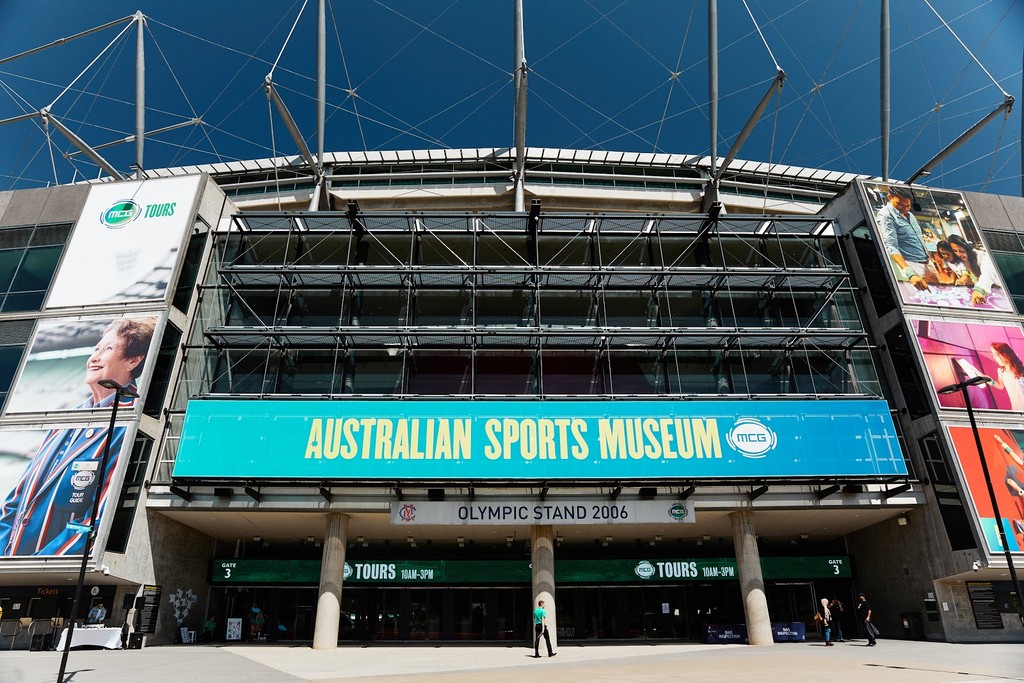
National Sports Museum (Source: Google Maps)
The National Sports Museum, located within the Melbourne Cricket Ground, is a treasure trove for sports lovers, showcasing Australia's rich sporting history. Opened in 2008, the museum features a vast collection of memorabilia, interactive exhibits, and displays that celebrate the achievements of Australian athletes across various sports, including cricket, AFL, and the Olympics. Visitors can explore the history of cricket with exhibits that highlight legendary players and memorable matches, while the AFL section delves into the sport's cultural significance in Australia. The museum also hosts temporary exhibitions that focus on specific sports or events, ensuring there's always something new to discover. The architecture of the museum harmonizes with the historic MCG, creating a seamless blend of old and new. The National Sports Museum not only educates visitors about Australia's sporting achievements but also inspires future generations to appreciate the nation's sporting legacy.
AAMI Park
Just a short walk away, AAMI Park is a distinctive stadium known for its unique bioframe design and hosts rugby and soccer matches, further showcasing Melbourne's sporting diversity.
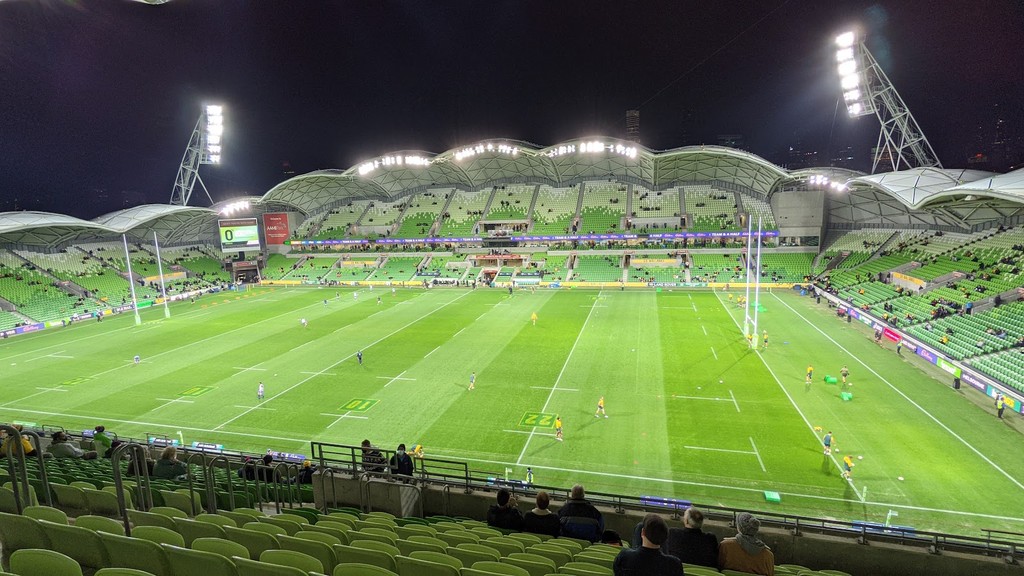
AAMI Park (Source: Google Maps)
AAMI Park is an architectural marvel and a key venue for sports in Melbourne, known for its distinctive bioframe design that resembles a giant inflatable structure. Opened in 2010, this stadium is primarily used for rugby and soccer matches, hosting teams from the A-League and Super Rugby competitions. The unique design of AAMI Park not only enhances its aesthetic appeal but also improves acoustics and spectator experience. The stadium's capacity of around 30,000 allows for an intimate atmosphere during events, fostering a strong connection between fans and players. AAMI Park is also an environmentally friendly venue, featuring sustainable practices in its construction and operation. Its proximity to the Melbourne Park precinct further cements its status as a central hub for sports in the city, making it a must-visit for sports enthusiasts.
Melbourne Park
Explore the Melbourne Park precinct, which includes several tennis courts and arenas, emphasizing Melbourne's status as a premier sports city.
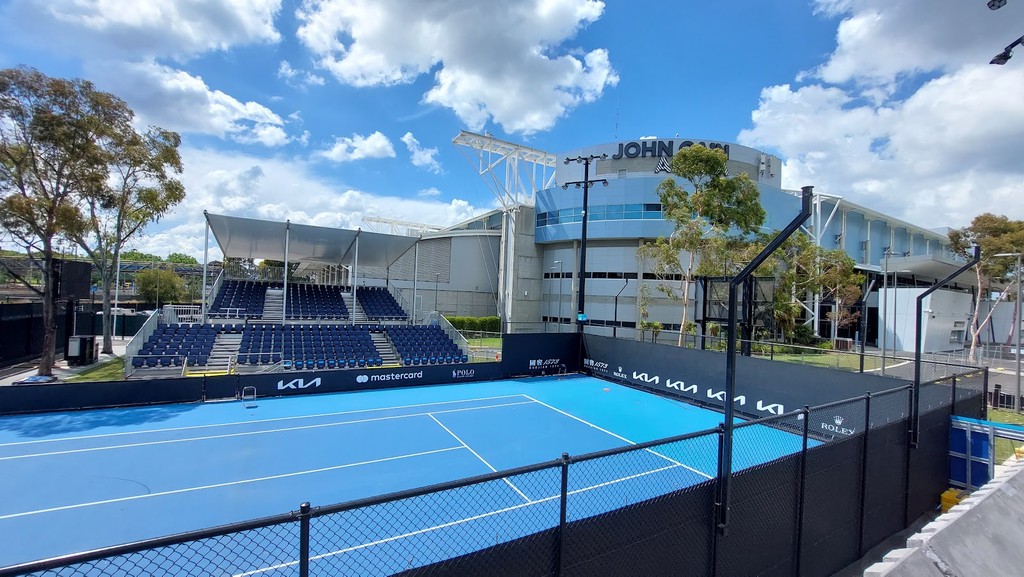
Melbourne Park (Source: Google Maps)
Melbourne Park is a premier sports precinct that showcases the city's dedication to athletics and events. Home to several world-class tennis courts and arenas, including the renowned Rod Laver Arena, it is best known for hosting the Australian Open, one of the four Grand Slam tennis tournaments. The precinct features state-of-the-art facilities that cater to both players and spectators, ensuring a top-tier experience during major sporting events. Melbourne Park is not just limited to tennis; it also hosts a variety of other sports and events throughout the year, attracting a diverse audience. The area is beautifully landscaped, providing a welcoming environment for visitors to enjoy before and after matches. The ongoing development and upgrades to Melbourne Park demonstrate the city's commitment to maintaining its status as a leading sports destination in Australia.
Rod Laver Arena
Walk to the Rod Laver Arena, part of Melbourne Park, famous for hosting the Australian Open, one of the four Grand Slam tennis tournaments.
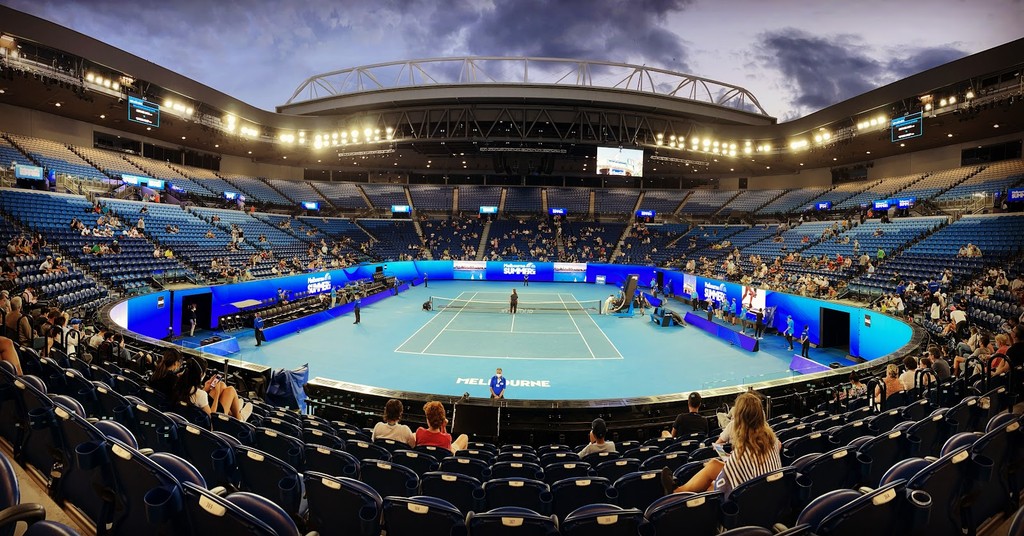
Rod Laver Arena (Source: Google Maps)
Rod Laver Arena is an iconic venue within Melbourne Park, celebrated for its role in hosting the Australian Open tennis tournament each January. Opened in 1988, the arena is named after the legendary Australian tennis player Rod Laver, who is the only player to have won all four Grand Slam titles in the same calendar year twice. The arena features a retractable roof, allowing for matches to continue regardless of weather conditions, which has become a hallmark of the Australian Open. With a seating capacity of over 15,000, Rod Laver Arena provides an electric atmosphere during tournaments, drawing fans from around the world. The arena also hosts a variety of concerts and events throughout the year, making it a versatile venue that contributes to Melbourne's vibrant cultural scene. Its modern design and facilities ensure that both athletes and spectators enjoy a world-class experience.
Olympic Park
Explore Olympic Park, a hub for various sports, providing insight into Melbourne's role in the 1956 Olympic Games and its ongoing sporting legacy.
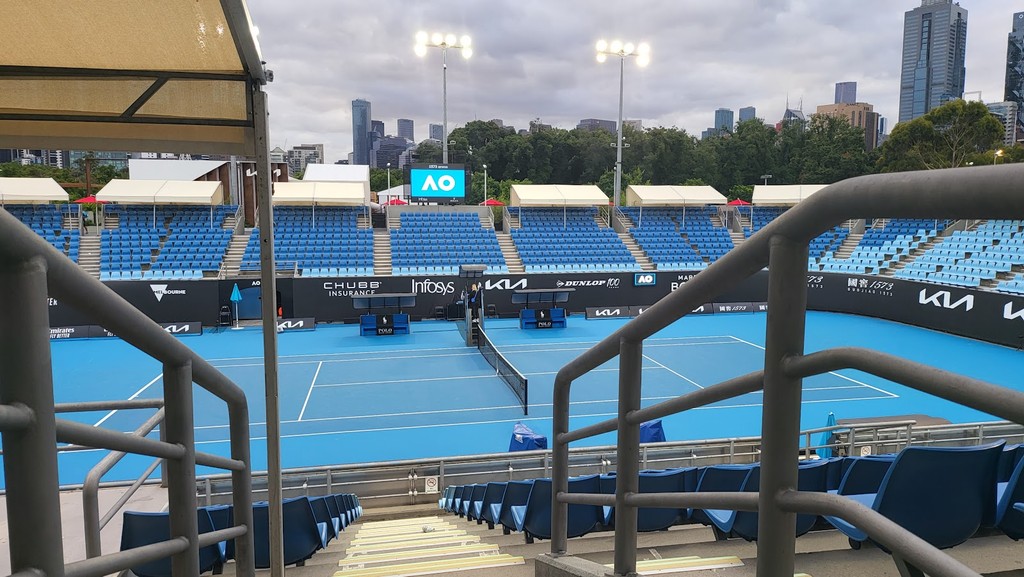
Olympic Park (Source: Google Maps)
Olympic Park is a significant site in Melbourne's sporting history, originally developed for the 1956 Olympic Games. This venue has since evolved into a multi-sport complex that hosts a variety of sporting events, training facilities, and community activities. The park is home to several sports venues, including the Melbourne Sports and Aquatic Centre, which offers a range of facilities for swimming, fitness, and recreation. Olympic Park is also a hub for grassroots sports, encouraging participation among local communities and fostering a love for athletics. The park's legacy from the 1956 Olympics continues to influence Melbourne's sporting culture, as it remains a symbol of the city's commitment to sports and recreation. Various events and festivals are held here throughout the year, celebrating both sporting achievements and community spirit.
Birrarung Marr
Head to Birrarung Marr, a vibrant riverside park that celebrates Aboriginal culture and offers picturesque views of the Yarra River and city skyline.
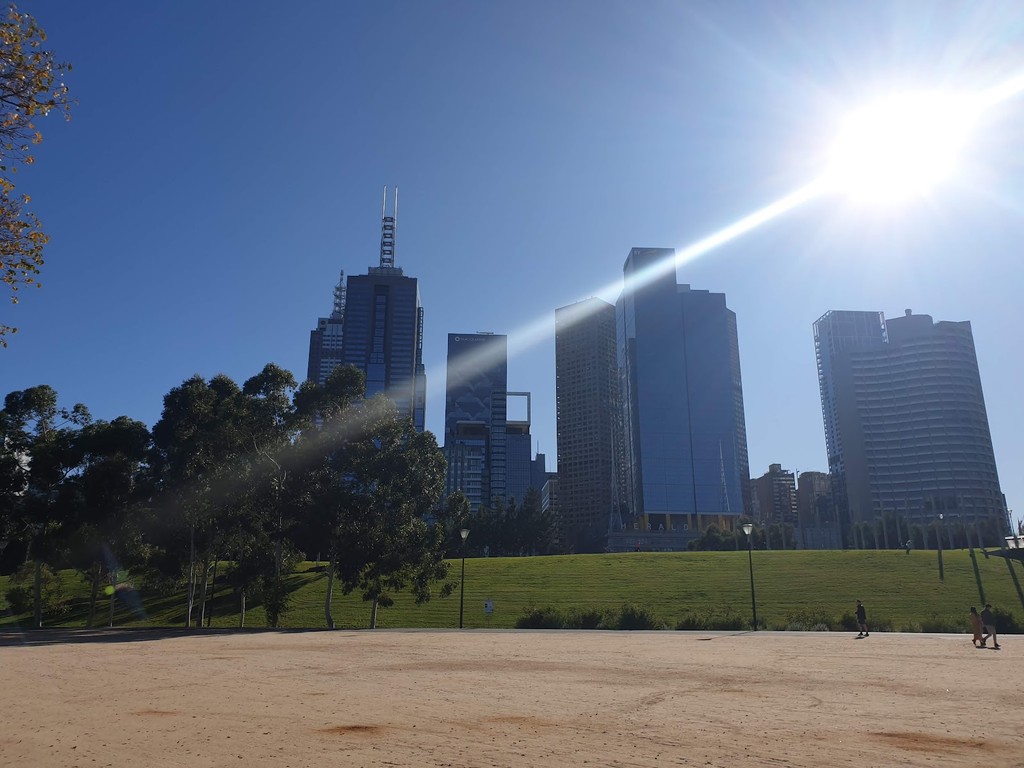
Birrarung Marr (Source: Google Maps)
Birrarung Marr is a vibrant riverside park that celebrates Melbourne's rich Aboriginal culture and history. Located along the Yarra River, this park features beautifully landscaped gardens, walking paths, and public art installations that reflect the cultural significance of the area. The park serves as a gathering place for community events, festivals, and cultural celebrations, fostering a sense of connection among residents and visitors. The name 'Birrarung' translates to 'river of mists' in the local Wurundjeri language, highlighting the area's Indigenous heritage. The park also offers stunning views of the city skyline, making it a popular spot for photography and relaxation. Birrarung Marr plays a crucial role in promoting awareness and appreciation of Aboriginal culture, making it an essential stop for anyone exploring Melbourne's diverse cultural landscape.
Federation Square
Conclude your tour at Federation Square, a cultural and civic center of the city, offering a blend of modern architecture, museums, and a lively atmosphere.
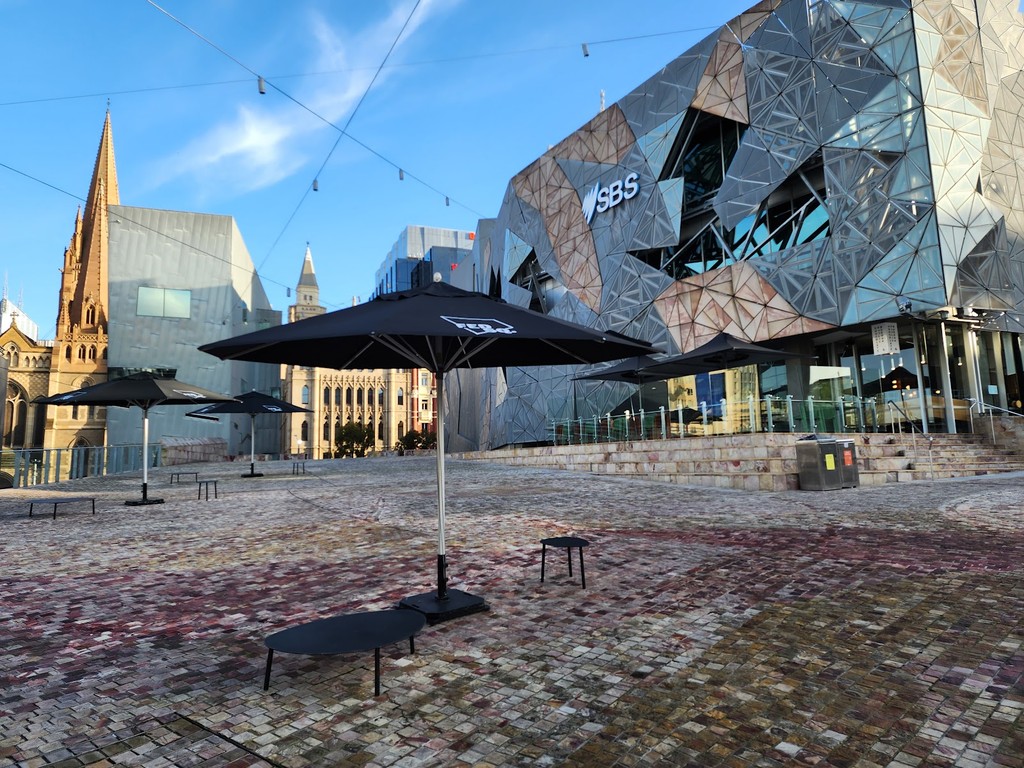
Federation Square (Source: Google Maps)
Federation Square is Melbourne's cultural and civic heart, renowned for its modern architecture and vibrant atmosphere. This public space is home to several museums, galleries, and entertainment venues, making it a hub for arts and culture in the city. The square features a unique design, with a series of interconnected buildings and open spaces that encourage social interaction and community engagement. It hosts a variety of events, from live performances to art exhibitions, attracting both locals and tourists alike. Federation Square is also a gateway to some of Melbourne's most iconic attractions, including the Australian Centre for the Moving Image (ACMI) and the Ian Potter Centre. The square's lively ambiance, combined with its architectural significance, makes it a must-visit destination for anyone looking to experience the cultural richness of Melbourne.

Your travels, your rules.
Create your own Free Walking Tours.
Set your preferences, distances and anything you want to do or see.
Completely free, no payment required.